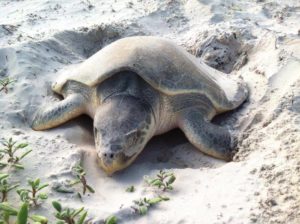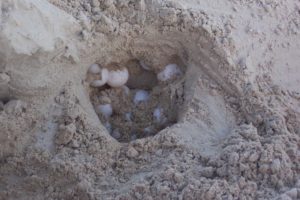The first nesting sea turtles of the season were spotted on Easter Sunday at Mustang Island. Visitors saw the Kemp’s ridley turtle laying eggs and reported it immediately.
The sea turtle’s 78 eggs were moved to the Padre Island National Seashore’s Division of Sea Turtle Science and Recovery for incubation.
FIRST KEMP'S RIDLEY NEST FOUND TODAY IN TEXAS! Today, a Kemp's ridley was documented nesting on Mustang Island. …
Posted by Padre Island NS Division of Sea Turtle Science & Recovery on Sunday, April 21, 2019
Padre Island NS Division of Sea Turtle Science & Recovery asks that people leave the turtles alone, but report any sightings to a park ranger or local game warden.
According to Texas Parks and Wildlife Department, “Kemp’s ridley sea turtles grow to 27-32 inches (68 to 82 cm) long and weigh on average 75-100 pounds (33 to 45 kg). Distinguishing characteristics include a dark gray to gray-green carapace (upper shell), cream to tan plasteron (lower shell), streamlined shells, and appendages shaped like flippers.The turtle’s dark, spotted head and flippers contrast sharply with its pale body.”

Nesting season in Texas can begin as early as mid-March and last through August. Females nest in groups called arribadas every one to three years. Each nest contains an average of 100 eggs that take 50-55 days to hatch.

The National Park Servicesays there are only 55 females nesting in Texas each year. The Kemp’s ridley sea turtle is the most endangered species worldwide. The reasons for the decline of this species include harvest of eggs and nesting adults, capture in fishing nets and environmental degradation.
In the late months of summer, as eggs begin to hatch, Padre Island National Seashore holds public releases. For information on hatching releases go to the National Park Service website or visit the Sea Turtle Program Facebook page.

